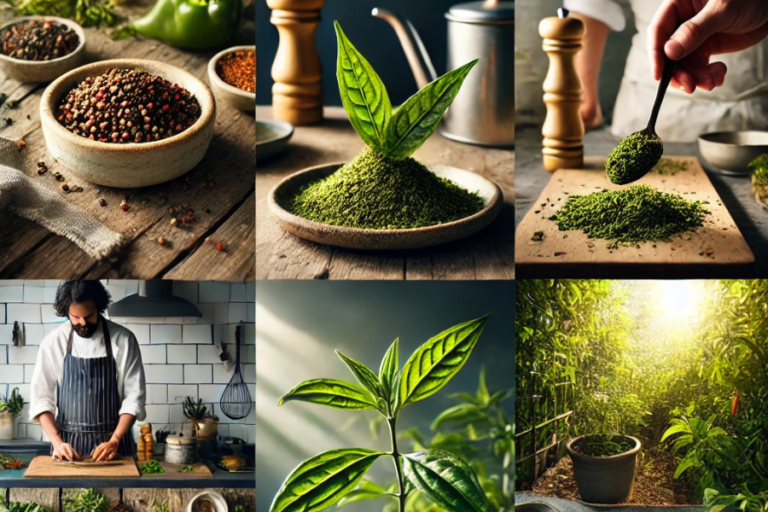Moronga: Ingredients, Preparation, and Why It’s Gaining Popularity Today
Introduction
Moronga, a type of blood sausage, has been a cherished dish across various cultures for centuries. Known for its distinctive flavor and rich nutritional profile, moronga is especially popular in Latin American countries like Mexico and El Salvador. Derived from the Spanish term “morcilla,” moronga reflects a long-standing tradition of using every part of an animal, embodying both sustainability and respect for food resources. As more people explore traditional foods, moronga has gained renewed attention for its unique taste and connection to cultural heritage. This article delves into its ingredients, history, and preparation methods, while highlighting its growing popularity in today’s culinary world.
What is Moronga?
Moronga, a type of blood sausage, has been a beloved dish in many cultures for centuries. Its roots run deep in the culinary traditions of Latin America, where it is particularly popular in countries like Mexico and El Salvador. Derived from the Spanish word “morcilla,” which also refers to blood sausages in Spain, moronga embodies the ethos of using every part of the animal—a tradition that resonates with sustainability and respect for food sources. This article explores the ingredients, history, preparation methods, and resurgence of moronga in modern culinary culture.
The History of Moronga
Blood sausages like moronga have ancient origins, rooted in the resourcefulness of early farming communities. In many cultures, using every part of a slaughtered animal was crucial for survival, and blood sausages allowed people to minimize waste. This practice can be found in various forms around the world, from Europe and Africa to Latin America.
In Latin American countries, especially Mexico and El Salvador, moronga has become a staple at family gatherings and special occasions. Originally a working-class dish, moronga was appreciated for its affordability and nutritional value. Over time, it evolved into a beloved delicacy that can now be found in upscale restaurants as well as street food vendors. Today, it is celebrated not only for its flavor but also for its deep connection to cultural heritage and sustainable eating practices.
Why Moronga is Gaining Popularity
While moronga has been a traditional food for centuries, it has recently seen a resurgence in popularity for several reasons.
1. Culinary Curiosity:As people become more adventurous in their food choices, there is growing interest in traditional dishes like moronga. Many food enthusiasts are eager to explore new flavors and culinary traditions, leading them to rediscover dishes that were once considered humble fare.
2. Sustainability:The sustainability movement has also contributed to moronga’s rise in popularity. The concept of using the entire animal, including the blood, aligns with the zero-waste philosophy that has become increasingly important in today’s culinary world. Moronga is a perfect example of a dish that minimizes waste while delivering exceptional flavor and nutrition.
3. Nutritional Interest:With its high protein and iron content, moronga is gaining attention from health-conscious individuals looking for nutrient-dense foods. As more people focus on natural, whole-food diets, dishes like moronga offer an attractive option for those seeking traditional, minimally processed foods.
Key Ingredients of Moronga
Moronga’s rich flavor and hearty texture come from a handful of core ingredients, each contributing to the dish’s unique character:
- Pig’s blood: The primary ingredient, pig’s blood, is responsible for the deep color and robust, iron-rich flavor that defines moronga.
- Pork fat: To achieve the right texture and ensure the sausage remains moist during cooking, pork fat is added to the mix.
- Herbs and spices: Garlic, oregano, onions, and various types of peppers are commonly used to season the blood, creating a balanced flavor profile that complements the richness of the blood and fat.
- Cereals: Many regional variations include fillers such as rice, oats, or cornmeal. These ingredients help bind the mixture and provide additional texture.
These simple ingredients are combined, packed into casings, and boiled to create a firm, flavorful sausage that has earned its place in traditional and modern Latin American cuisine.
How Moronga is Made
Making moronga is a meticulous process that requires attention to detail and patience. While modern techniques and equipment have streamlined the process, the traditional methods still form the backbone of moronga production.
1. Collection of Pig’s Blood:Fresh pig’s blood is the essential foundation of moronga. When collecting the blood, it must be stirred continuously to prevent coagulation. This ensures a smooth mixture for the sausage and helps maintain its deep red color and rich flavor.
2. Preparing the Mix:Once the blood is collected, it is mixed with various herbs, spices, and finely chopped vegetables. Common additions include garlic, onions, and oregano, though regional variations may feature different spices. Some recipes also call for cereals such as rice, cornmeal, or oats to provide extra texture and structure.
3. Stuffing the Casings:After the ingredients are combined, the mixture is stuffed into sausage casings. Natural or synthetic casings can be used, depending on personal preference or availability. These casings are often soaked in water beforehand to make them easier to handle during the stuffing process.
4. Boiling the Sausage:The filled casings are then boiled for an hour or more until the sausage firms up. This boiling process ensures the blood solidifies, giving the sausage its signature consistency.
5. Cooling and Storing:Once the boiling process is complete, the sausages are removed from the water and allowed to cool. Moronga can be eaten immediately or stored for future use, either in its boiled form or fried later for added texture and flavor.
Nutritional Value of Moronga
Moronga is not just a flavorful dish; it also offers several nutritional benefits. Due to its high blood content, moronga is an excellent source of iron, making it particularly beneficial for those at risk of anemia or those looking to boost their iron intake naturally.
In addition to iron, moronga is rich in protein, which is essential for muscle development and repair. The fat content provides a source of energy, while the herbs and spices contribute antioxidants that support overall health.
Key Nutritional Benefits of Moronga:
- Iron-rich: Pig’s blood is an excellent source of iron, vital for maintaining healthy red blood cells.
- High in protein: The sausage provides a significant amount of protein, essential for muscle health and recovery.
- Source of vitamins: Moronga contains several important vitamins, particularly B12, which supports nerve function and the formation of red blood cells.
However, like many rich, fatty foods, moronga should be consumed in moderation, particularly by individuals monitoring their cholesterol levels.
Popular Ways to Serve Moronga
Moronga’s versatility in the kitchen makes it a beloved dish across Latin America and beyond. It can be served in a variety of ways, allowing for creativity and regional flair. Here are some of the most popular ways to enjoy moronga:
1. Tacos de Moronga:One of the most common ways to serve moronga is in tacos. The sausage is sliced, lightly fried, and served in soft tortillas with fresh toppings such as cilantro, onions, and salsa. This preparation is popular in Mexico’s street food scene, where moronga tacos are a staple.
2. Grilled Moronga:For those who enjoy a smokier flavor, grilling moronga is a fantastic option. The grilling process enhances the flavors of the herbs and spices while giving the sausage a crispy exterior. Grilled moronga is often served with fresh lime, chili, and tortillas, making it a flavorful and satisfying meal.
3. Moronga Soup:In some regions, moronga is incorporated into soups and stews. The blood sausage adds depth and richness to the broth, making for a hearty and flavorful dish. Moronga soup is often served with vegetables and beans, adding fiber and vitamins to the meal.
4. Moronga with Rice and Beans:A classic Latin American combination, moronga served with rice and beans creates a well-balanced meal of protein, fiber, and carbohydrates. The richness of the sausage pairs perfectly with the simplicity of the rice and beans, making this dish a favorite at family gatherings.
Conclusion
Moronga is much more than a simple sausage. It is a culinary tradition passed down through generations, celebrated for its flavor, nutritional benefits, and resourcefulness. Whether enjoyed in tacos, grilled to perfection, or as part of a hearty soup, moronga represents the deep cultural roots of Latin American cuisine.
As food enthusiasts continue to explore the culinary traditions of the past, moronga’s place in the modern food landscape is secure. It offers a unique way to experience history and culture through flavor, reminding us of the importance of sustainability and the beauty of traditional cooking. Whether you’re new to moronga or a long-time fan, this blood sausage remains a beloved staple that continues to inspire and satisfy.
FAQs
1. What is moronga?
Moronga is a type of blood sausage made primarily from pig’s blood, pork fat, and various herbs and spices. It is especially popular in Latin American countries like Mexico and El Salvador, where it holds deep cultural and culinary significance.
2. What are the key ingredients in moronga?
The primary ingredients in moronga include pig’s blood, pork fat, garlic, onions, oregano, and various types of peppers. Some regional variations also include fillers like rice, oats, or cornmeal to add texture and structure to the sausage.
3. How is moronga made?
Moronga is made by collecting fresh pig’s blood, mixing it with herbs, spices, and fillers, and then stuffing it into sausage casings. The sausage is boiled until it firms up, and it can be eaten immediately or stored for later use.
4. Is moronga healthy?
Moronga is rich in iron and protein, making it a nutritious option for those seeking to boost their iron intake or maintain muscle health. However, due to its fat content, it should be eaten in moderation, especially by individuals monitoring their cholesterol levels.
5. What does moronga taste like?
Moronga has a distinctive, rich flavor, thanks to the iron content of the pig’s blood and the added herbs and spices. The texture can range from smooth to slightly coarse, depending on the fillers used in different regional varieties.
6. How is moronga traditionally served?
Moronga can be served in various ways, such as in tacos, grilled, incorporated into soups, or paired with rice and beans. Its versatility makes it popular in both street food and upscale restaurant settings.
7. Is moronga the same as morcilla?
Moronga is similar to morcilla, which is a Spanish version of blood sausage. While both are blood sausages, moronga typically refers to Latin American variations of the dish, with unique spices and preparation methods specific to the region.
8. Why is moronga gaining popularity today?
Moronga is experiencing a resurgence due to growing interest in traditional foods, sustainability, and nutrient-dense eating. Its connection to cultural heritage and minimal waste aligns with modern culinary trends focused on sustainability and whole-food diets.
9. Can moronga be stored after cooking?
Yes, moronga can be stored after cooking. Once boiled and cooled, it can be refrigerated or frozen and later reheated by frying or grilling for enhanced flavor and texture.
10. Where can I find moronga?
Moronga can often be found in Latin American markets, specialty grocery stores, or restaurants that serve traditional Mexican or Salvadoran cuisine. It is also a popular street food in many regions.
Uncover juicy celebrity rumors and entertainment updates on nycheading.






